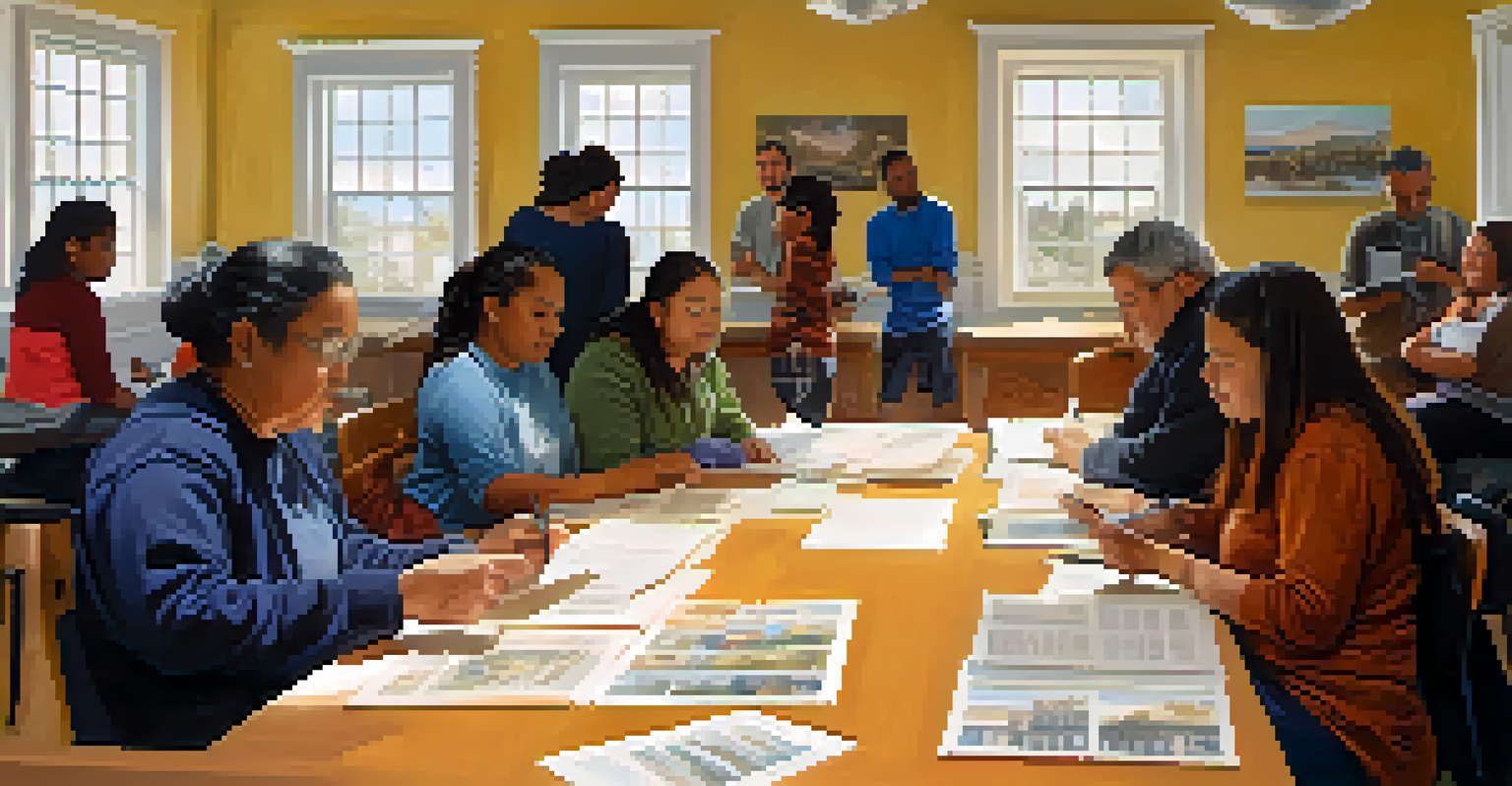Preservation Efforts for San Jose's Cultural Heritage Sites

Understanding San Jose's Cultural Heritage Significance
San Jose, known as the heart of Silicon Valley, holds a rich tapestry of cultural heritage that reflects its diverse history. From historical landmarks to vibrant neighborhoods, these sites tell the stories of the people and events that shaped the city. The preservation of these cultural heritage sites is crucial not only for education but also for community identity.
Preservation of cultural heritage is not just about protecting the past; it's about empowering future generations to connect with their roots.
For instance, the historic Japantown is one of the last three remaining authentic Japantowns in the United States. It serves as a reminder of the Japanese American experience and is a focal point for cultural events and celebrations. Understanding the significance of these sites helps foster a sense of pride and belonging among residents.
Moreover, preserving these sites allows future generations to connect with their roots, providing a tangible link to the past. As San Jose continues to grow and evolve, maintaining its cultural heritage becomes even more vital in ensuring that the stories of its diverse communities are not lost.
Current Preservation Efforts in San Jose
San Jose has implemented various preservation initiatives aimed at safeguarding its cultural heritage. The city's Office of Cultural Affairs plays a pivotal role in identifying and protecting historic sites through surveys and documentation. This proactive approach ensures that significant sites are recognized and maintained for public enjoyment and education.

In addition to city efforts, local organizations, such as the San Jose Historical Museum, actively engage in preservation activities. They host events, workshops, and educational programs to raise awareness about the importance of cultural heritage. These efforts not only protect sites but also encourage community participation and stewardship.
Cultural Heritage Shapes Identity
San Jose's diverse cultural heritage sites foster community pride and a sense of belonging among residents.
Furthermore, partnerships between the city, local businesses, and community members enhance preservation efforts. Collaborative initiatives, such as fundraising campaigns and volunteer days, help maintain and restore these cultural landmarks, creating a shared sense of responsibility and pride among San Jose residents.
Challenges Facing Cultural Heritage Preservation
Despite the dedicated efforts, San Jose's cultural heritage sites face numerous challenges. Rapid urban development and gentrification often threaten historic neighborhoods and buildings. As new construction projects arise, many cultural landmarks risk being overshadowed or demolished, leading to a loss of historical context.
Communities that engage in preserving their heritage create a vibrant identity that fosters pride and a sense of belonging.
Additionally, funding for preservation initiatives can be limited. Many organizations rely on grants and donations, which may fluctuate with economic conditions. This uncertainty can hinder long-term planning and maintenance of cultural sites, leaving them vulnerable to neglect.
Community awareness is another challenge. While some residents are passionate about preserving their heritage, others may not fully understand its significance. Engaging the broader community through education and outreach is essential to foster appreciation and support for these sites.
Community Involvement in Heritage Preservation
Community involvement is key to the success of preservation efforts in San Jose. Local residents and organizations are often the first line of defense against threats to cultural heritage. By participating in city meetings, volunteering for preservation projects, and attending cultural events, community members can make a meaningful impact.
Moreover, grassroots movements have emerged to advocate for the protection of specific sites at risk. For example, campaigns to save historic buildings often rally community members and generate media attention, putting pressure on city officials to take action. These grassroots efforts exemplify how collective action can lead to positive change.
Challenges in Preservation Efforts
Rapid urban development and limited funding present significant challenges to preserving San Jose's cultural heritage.
Additionally, educational programs and workshops help engage the community in preservation efforts. By teaching residents about the history and significance of their cultural heritage, they become more invested in its preservation. This sense of ownership fosters a vibrant community that values and protects its cultural identity.
The Role of Technology in Preservation Efforts
In today's digital age, technology plays a crucial role in preserving cultural heritage. Innovations such as 3D scanning and digital archiving allow for detailed documentation of historic sites. This technology not only aids in preservation but also makes cultural heritage more accessible to a global audience.
For instance, virtual tours and online exhibitions enable people to explore San Jose's heritage from anywhere in the world. These digital initiatives can spark interest and awareness, encouraging more individuals to support preservation efforts. By leveraging technology, San Jose can reach a wider audience and promote its cultural significance.
Furthermore, social media platforms provide an avenue for community engagement and awareness. Local organizations can share stories, updates, and calls to action, fostering a sense of community around preservation efforts. This digital presence amplifies voices advocating for cultural heritage, creating a dynamic community of preservationists.
The Impact of Preservation on Local Economy
Preserving cultural heritage sites not only enriches community identity but also has significant economic benefits. Heritage tourism is a growing sector, attracting visitors eager to learn about San Jose's history and culture. By investing in preservation, the city can enhance its appeal as a tourist destination, stimulating local businesses.
Local shops, restaurants, and art galleries often thrive in historic neighborhoods, creating jobs and contributing to the economy. For example, festivals and cultural events held in preserved areas draw crowds, benefiting local vendors and service providers. This symbiotic relationship illustrates how preserving cultural heritage can directly impact economic growth.
Community Engagement is Essential
Active participation from local residents and organizations is crucial for the success of cultural heritage preservation initiatives.
Moreover, a strong cultural heritage fosters community pride, which can enhance the quality of life for residents. When people feel connected to their history and surroundings, they are more likely to invest in their community, further contributing to local economic development. Ultimately, preserving cultural heritage is a win-win for both residents and the local economy.
Looking Ahead: Future of San Jose's Cultural Heritage
As San Jose continues to evolve, the future of its cultural heritage sites will depend on ongoing commitment and collaboration. The city's leadership, community organizations, and residents must work together to ensure that preservation remains a priority. This collaborative approach can help identify new opportunities for protecting and celebrating the city's rich history.
Future initiatives may include expanding educational programs in schools to teach students about local history and cultural heritage. By instilling a sense of pride and understanding in younger generations, the city can cultivate lifelong advocates for preservation. Additionally, increased funding and resources are necessary to support these programs and initiatives.

Ultimately, the future of San Jose's cultural heritage sites hinges on collective action and a shared vision. By recognizing the value of these sites and actively working to protect them, San Jose can ensure that its rich history and diverse culture continue to thrive for generations to come.